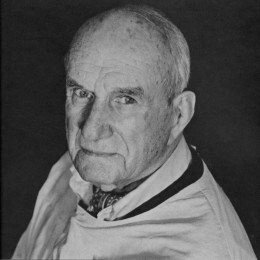
Image Source: HUNGARIAN FREE PRESSEMIL BISTTRAM
1895-1976
"It is my conviction that art…is a means to unfold the consciousness and thereby bring it to envision and experience wider horizons…an experience on a higher plane of emotion and intellectual perception without which there can be no real progress in man's development." (Emil Bisttram)
EMIL BISTRAM BIOGRAPHY
-
Emil Bisttram was born in Hungary, near the Romanian border, in 1895. When he was 11 years old, his family immigrated to New York City. Emil grew up in the tenement buildings that had become the destination for so many Eastern European immigrant families. He was a talented artist, and after a few years began his schooling at the National Academy of Art and Design, then Cooper Union, Parsons, and The Art Student’s League. Most of his studies were completed through night courses, as he was working as a commercial artist to support himself. His eagerness to study would translate to a love of and great skill for teaching. He began teaching soon after completing school, first at the New York School of Fine and Applied Arts, and then at the Master Institute of the Roerich Museum.
Bisttram first visited Taos during the summer of 1930. He went initially to escape the hardship of life in New York following the stock market crash. His first visit, however, was nearly his last. While enthralled by the beauty of New Mexico, Bisttram was endlessly frustrated by his first attempts at painting there: “Whenever I tried to paint what was before me I was frustrated by the grandeur of the scenery and the limitless space. Above all a strange, almost mystic quality of light.”
Perhaps frustrated by what may be perceived as his own limitations as an artist, Bisttram returned to New York. If indeed he was frustrated at that time, it couldn’t have lasted long, as the very next year he won a Guggenheim fellowship to study mural painting. The fellowship enabled Bisttram to travel to Mexico where he studied mural painting with the world famous muralist Diego Rivera. Numerous mural commissions were to follow throughout his career, including murals for the Department of Justice in Washington D.C., The Taos County Courthouse, New Mexico, and the Federal Courthouse in Roswell, New Mexico.
After his time with Rivera was through, Bisttram returned immediately to Taos, and that same year founded the Taos School of Art, of which he would remain the director for the rest of his life. Bisttram came to be much admired as a teacher. He was an extremely articulate individual, and was as skilled at explaining concepts of composition, drawing and painting as he was at applying those concepts to his own paintings. The school was very well attended, particularly during the summer months. Further demonstrating his skills as an administrator, the following year Bisttram started the first commercial art gallery in Taos, the Heptagon Gallery.
Bisttram first came to Taos as a representational painter. His canvases show stylized renderings of Native American dancers, portraits of natives and Mexicans, as well as depictions of local architecture. However, he began to experiment with non-objective (ie. Abstract) forms in his paintings. He became heavily influence by the work and philosophy of the painter Wassily Kandinsky. Indeed, in many of Bisttrams canvases, the influence of the Russian is evident in the bright colors, and abstract forms that he began to employ. In 1938 Bisttram, along with Raymond Johnson and several other painters, founded the Transcendental Painting Group in Santa Fe, New Mexico. The aim of the group was to work to bring painting beyond the appearance of the physical world. Work of this type had begun in Europe at least two decades previously, but this was something new to America. Despite the stated goal, Bisttram often maintained elements that were at least semi-representational in his canvases.


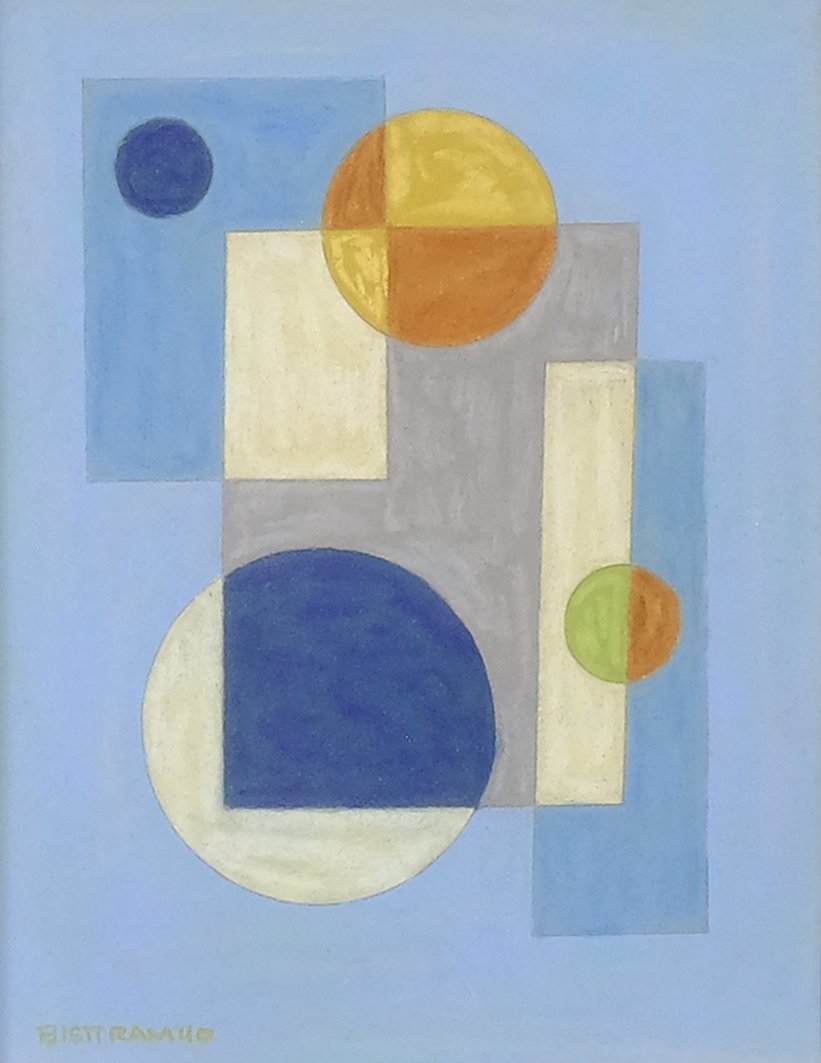
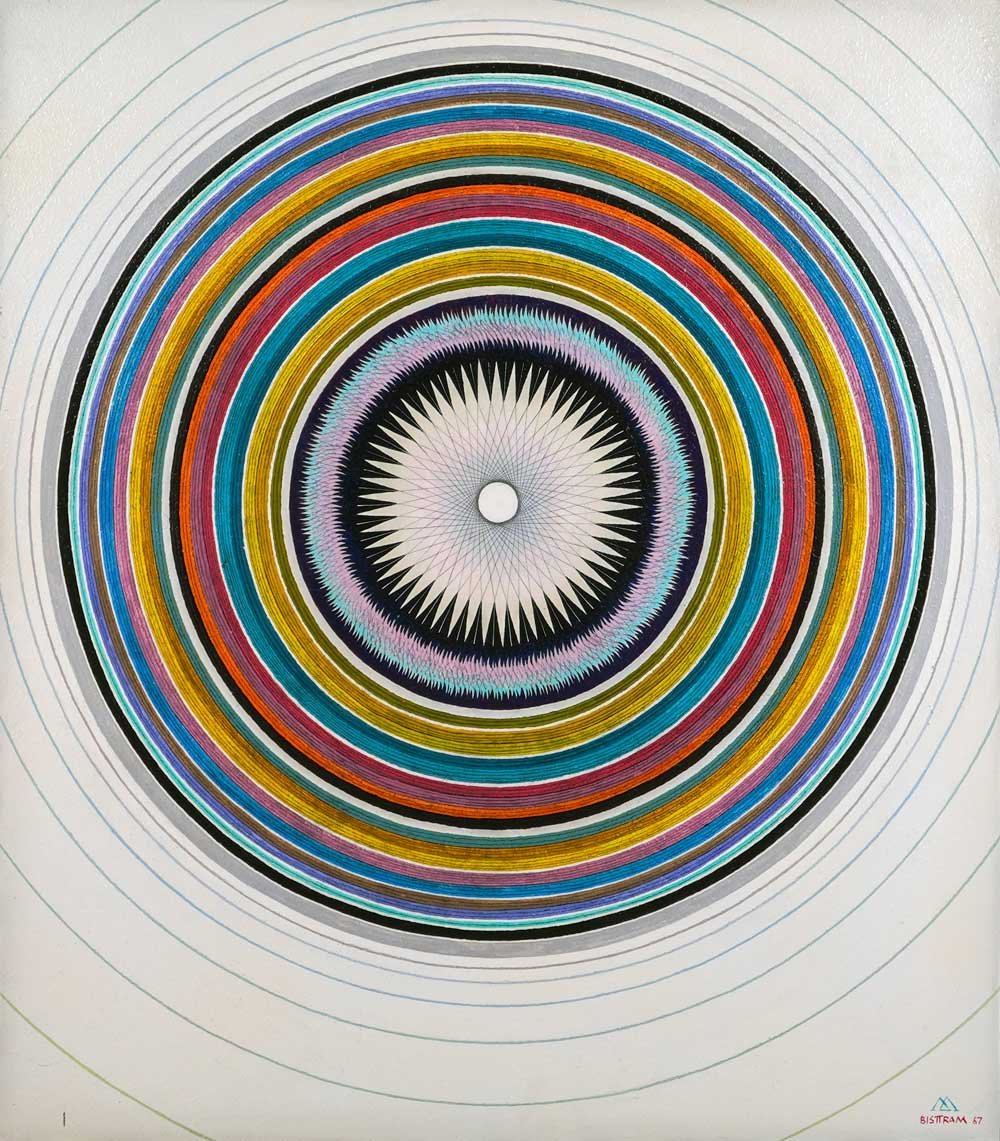

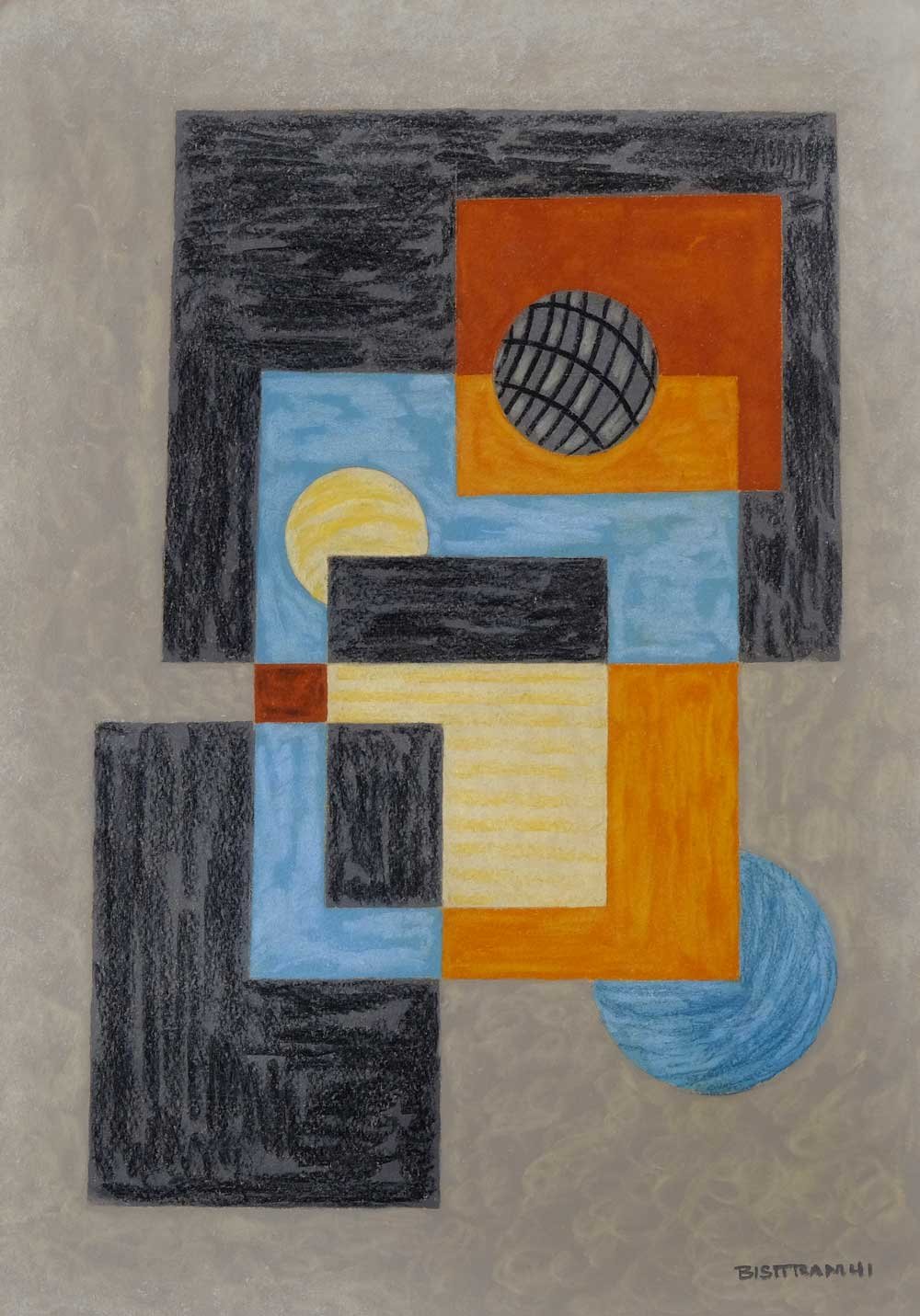
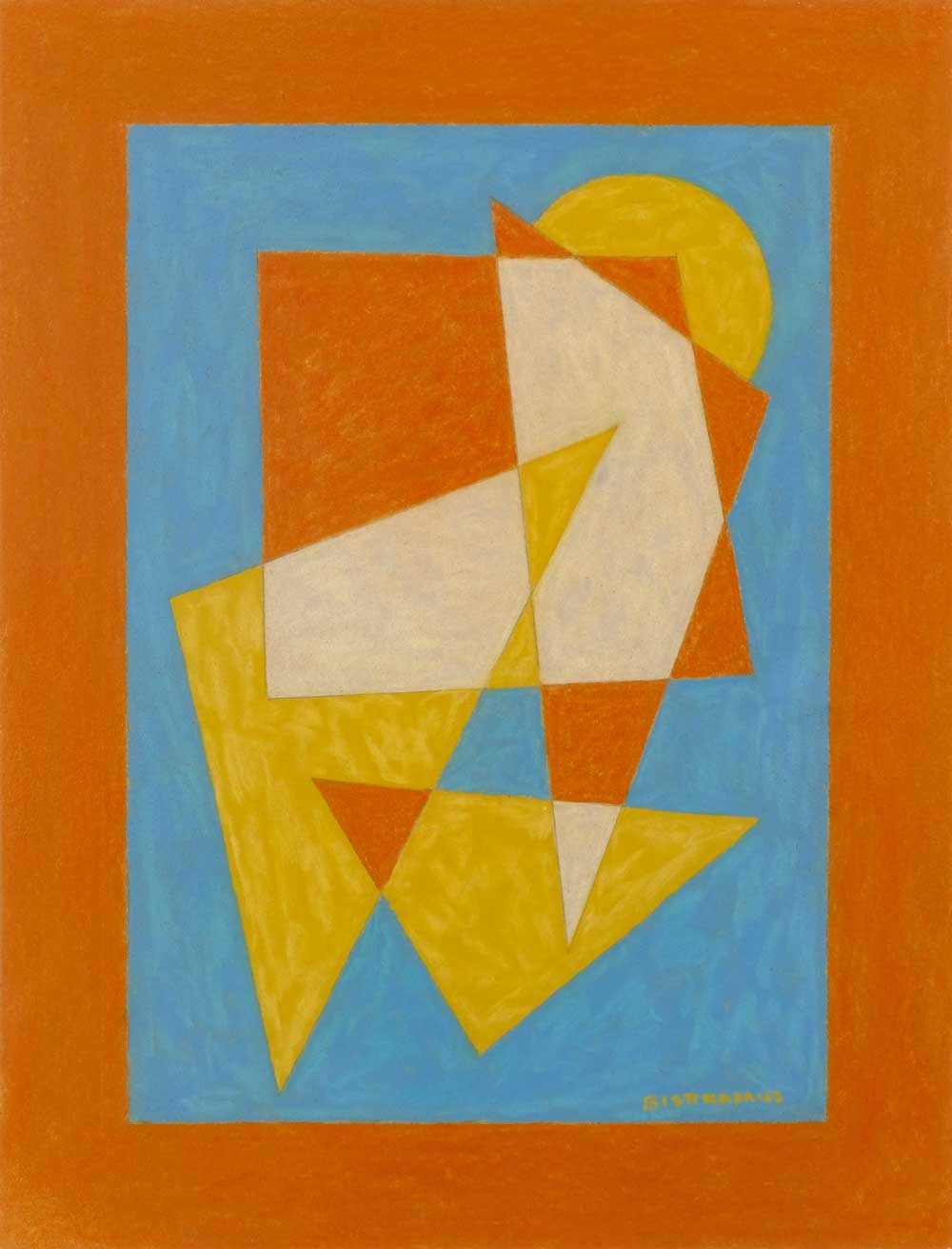
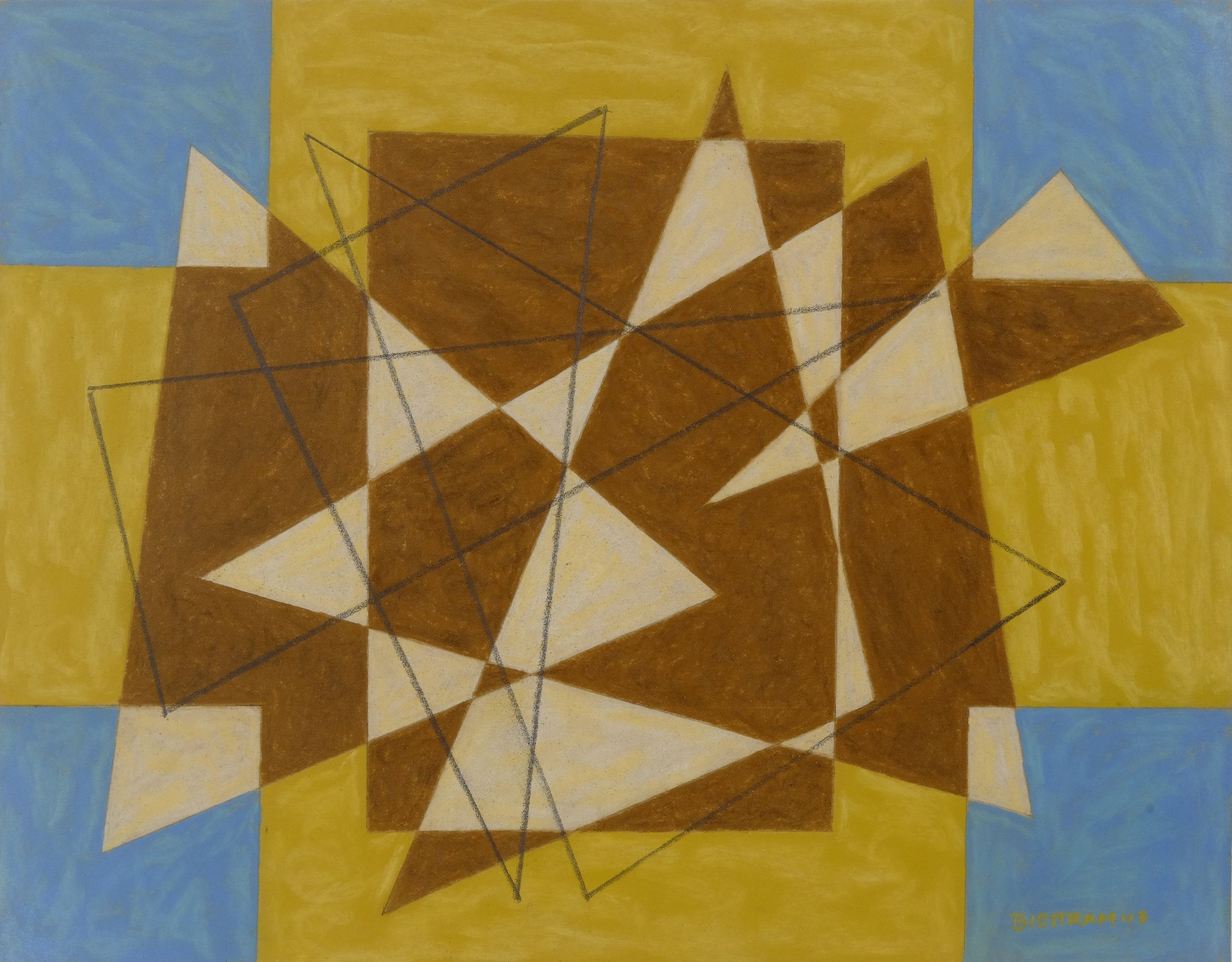
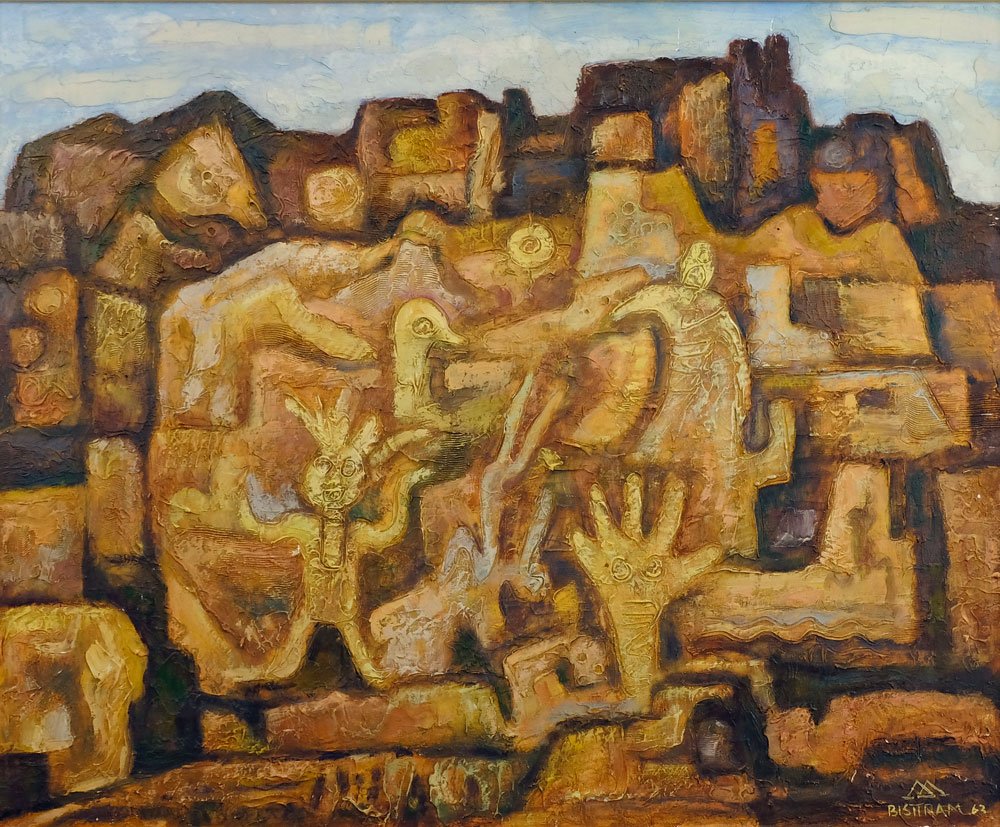









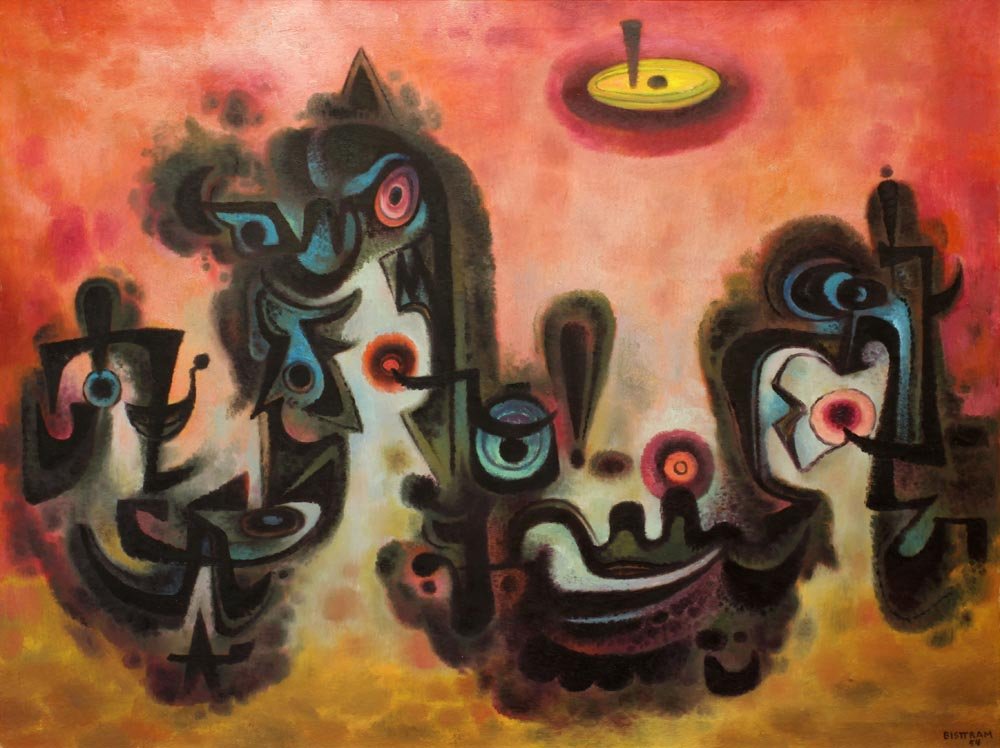


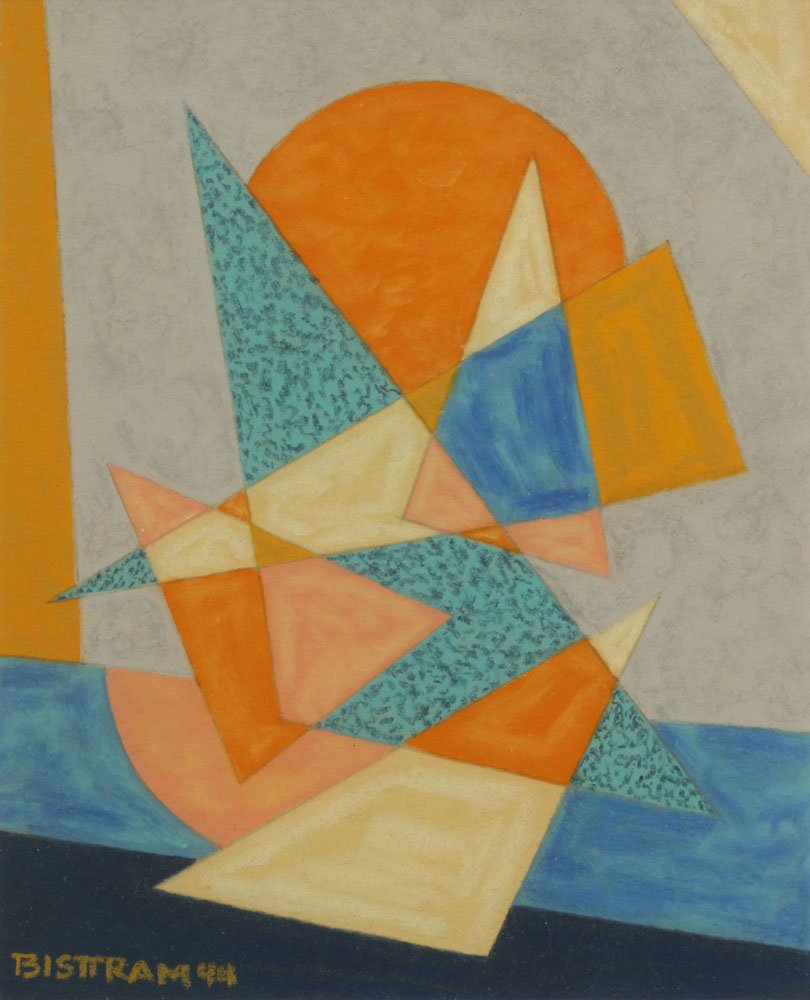

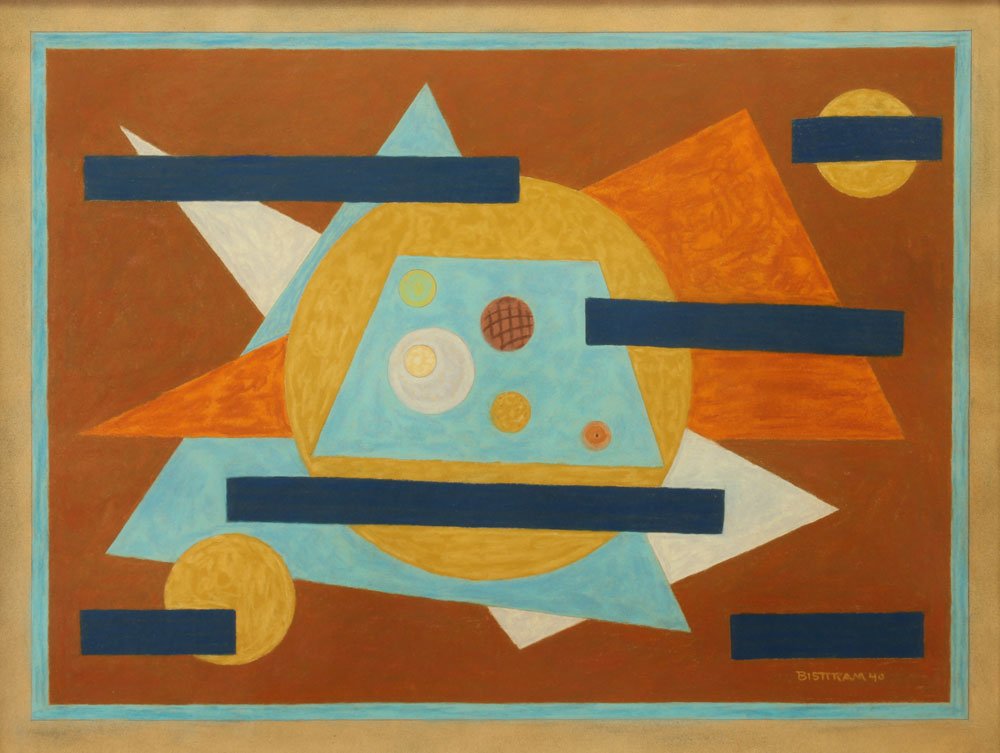



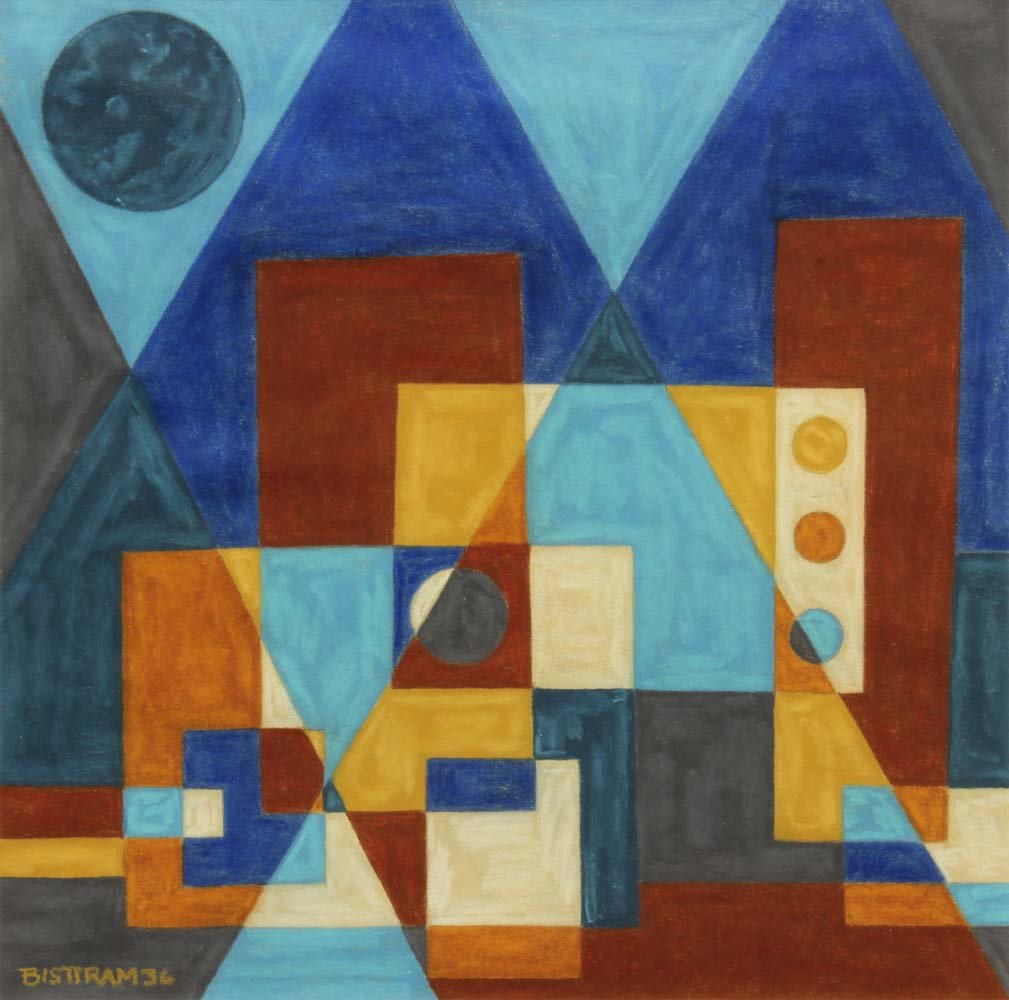











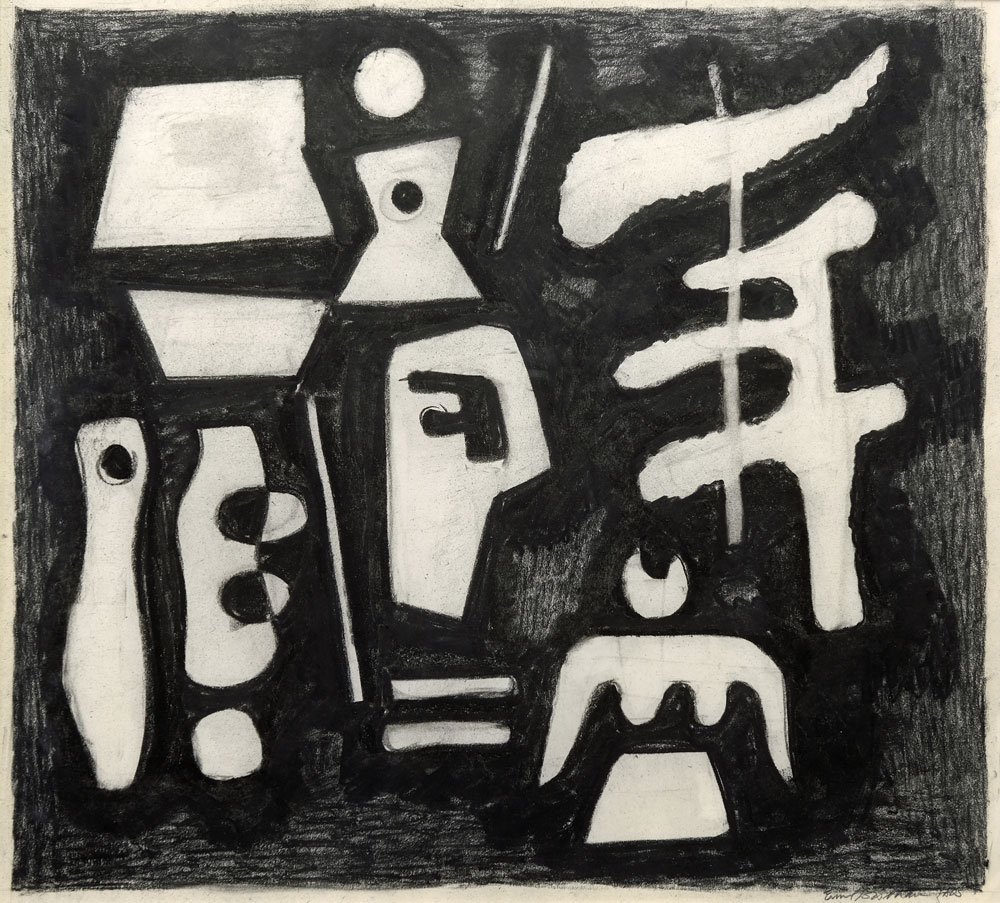














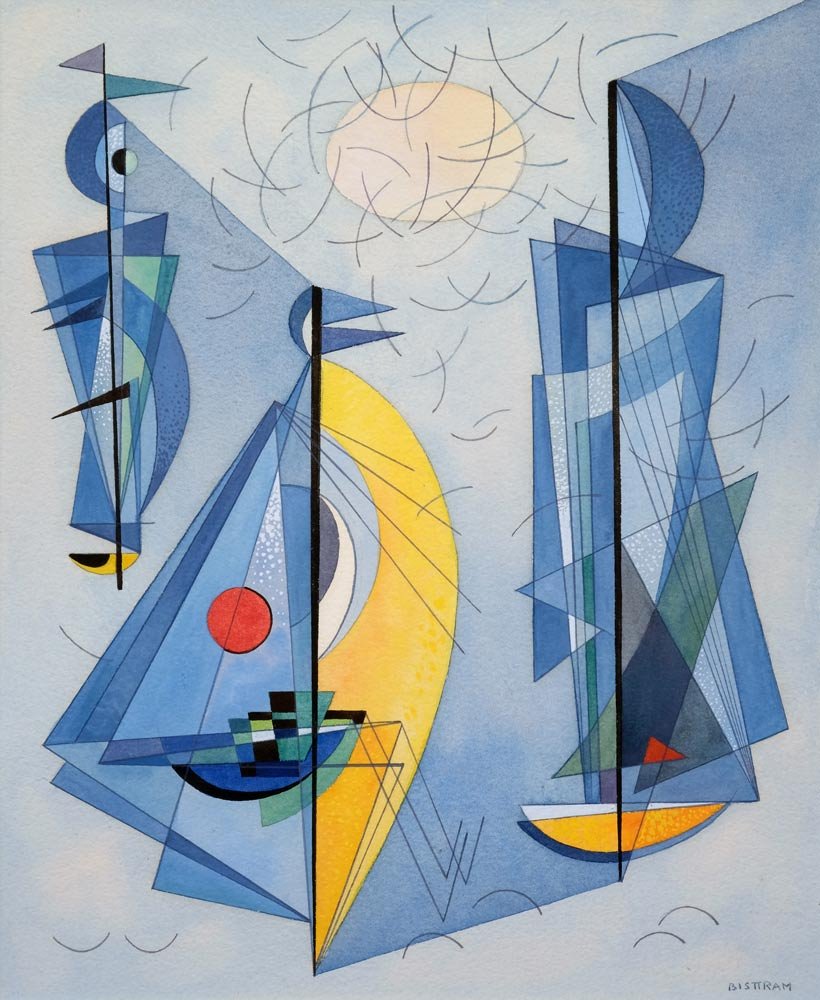
















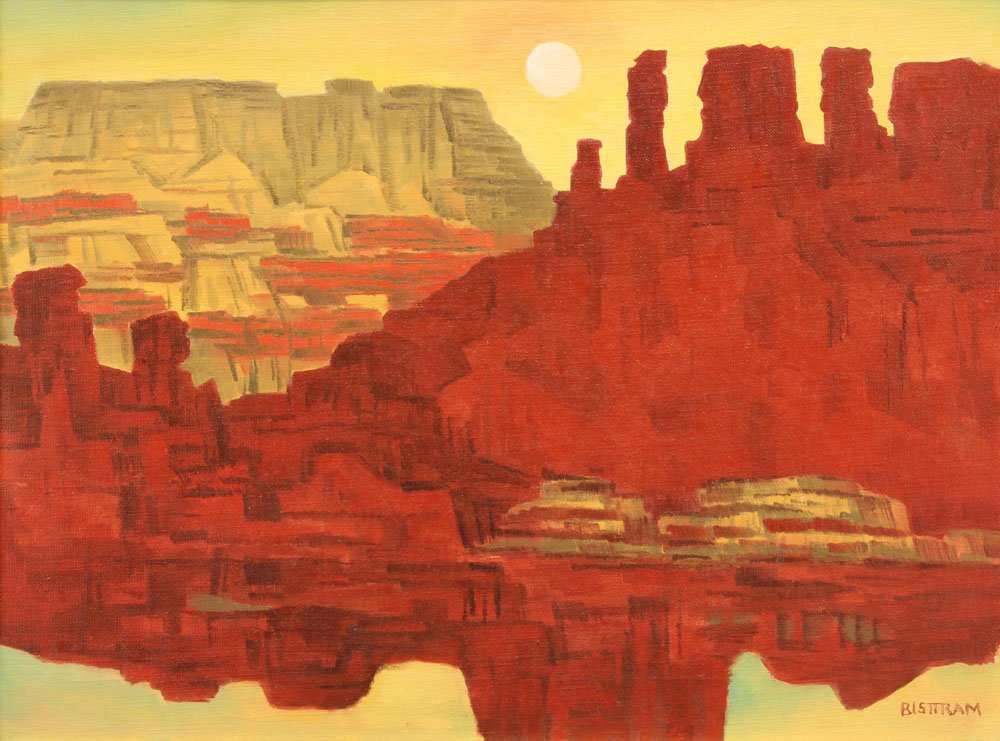








ca. 1940’s
Mixed media on paper
9 × 7 inches
Signed and dated lower left
INQUIRE